
Appfire - Configuration Manager for Jira (CMJ)
Configuration Manager for Jira enables Jira administrators to move projects and configurations between Jira instances for migrations, consolidations, testing configuration changes, cloning, archiving, and more.The app also enables admins to find and resolve configuration errors easily, view configuration dependencies, and clean up unused configurations.
Export and import Jira projects and configurations
Automate the movement of Jira projects (with or without issues) or full system snapshots between instances. Ideal for implementing change requests, creating backups, archiving unused projects, and full migrations.
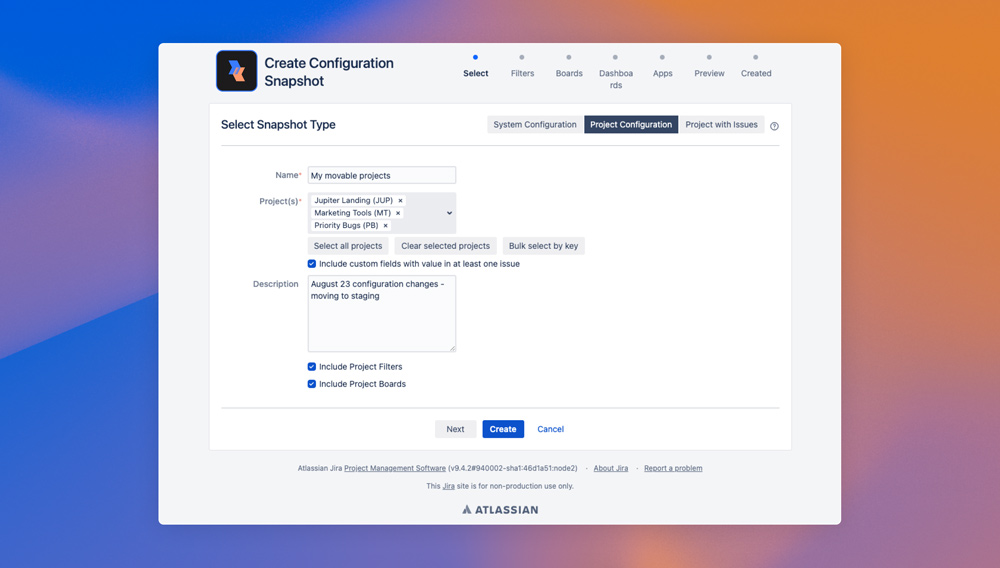

Benefits:
- No-fear migration - Automate moves of entire Jira instances or selected projects between server, Data Center, and Cloud. Safely consolidate or migrate with full transparency.
- Trustworthy automation - Robust change and impact analysis, roll-back protection, and audit logs allow transparency and enforce data integrity when making changes.
- Top-notch governance - Create snapshots of project configurations and move them freely between test, staging, and production environments. Modify or validate changes before introducing them in production.
Interactive configuration insight and dependency mapping
Search and locate configuration elements, understand their dependencies and usage, edit and configure them without compromising the integrity of your system configuration.
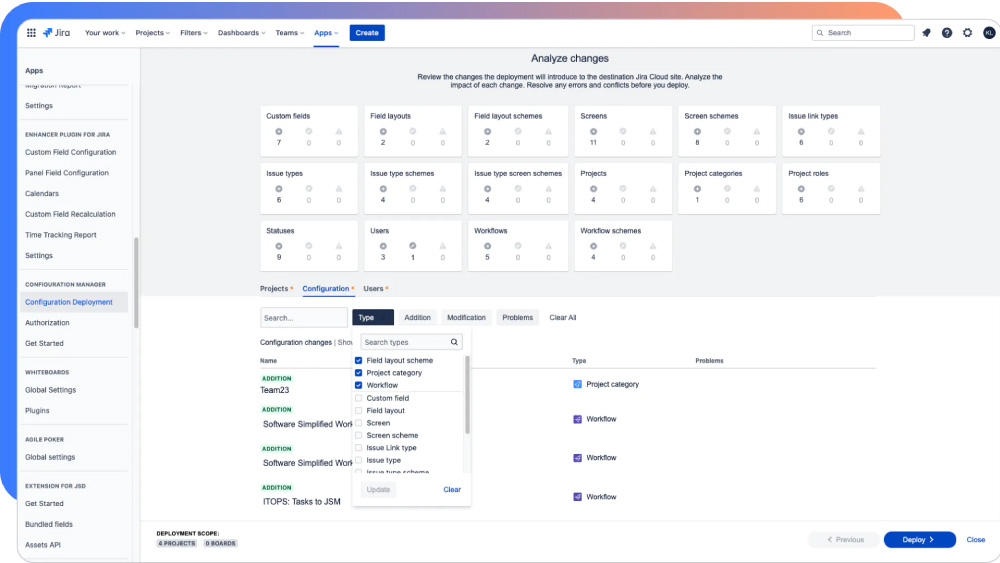

System integrity check and quick fix resolutions
Easily detect errors in all Jira configuration elements and prevent them from making it to production. Use location paths to navigate directly to each error or apply all available quick fixes.
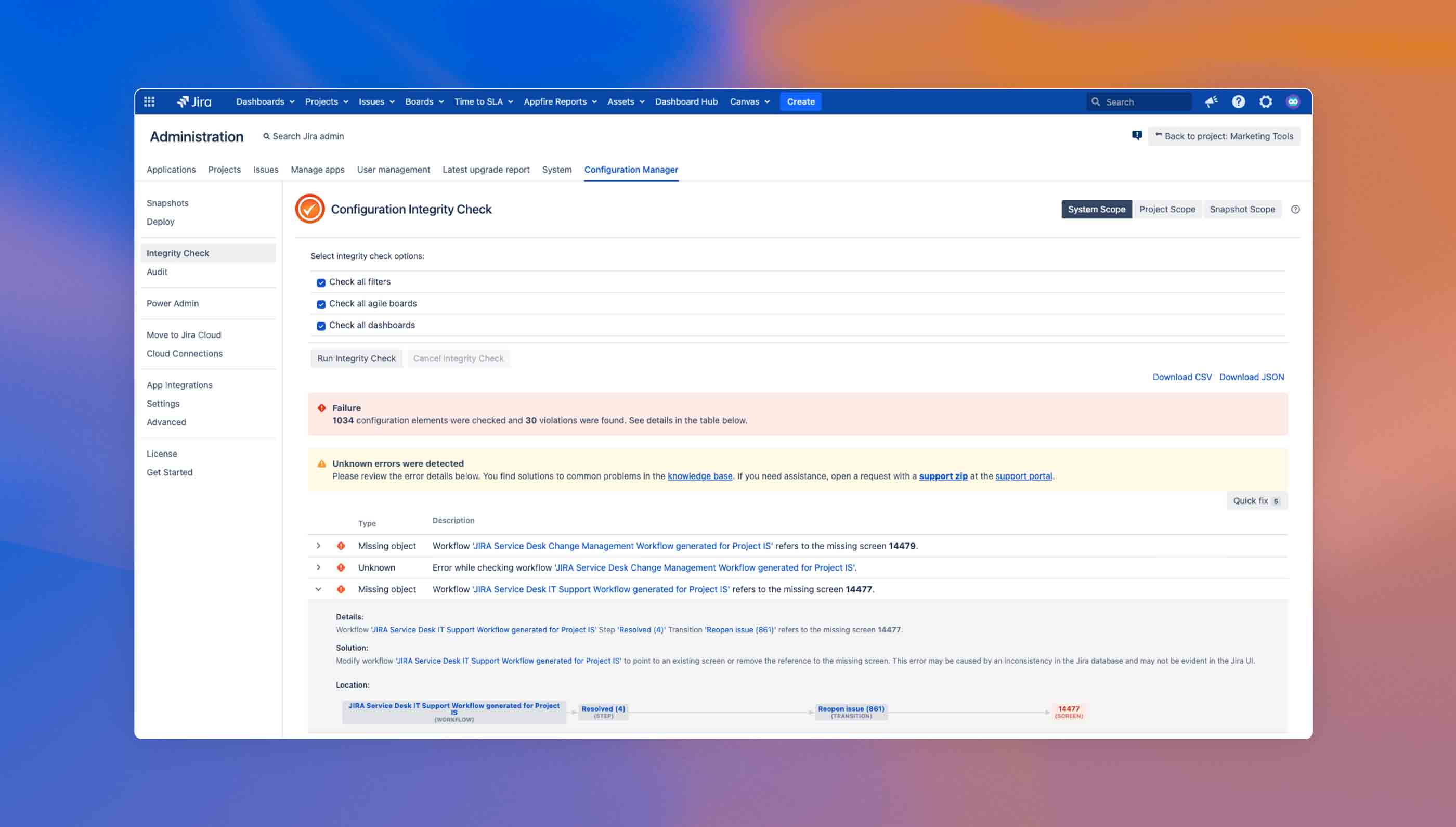

Custom configuration mapping between source and target
See how proposed configuration changes will impact existing projects on the target, and deploy them as-is or modify them on the fly. Avoid overwriting configuration elements or customize them during deployment.
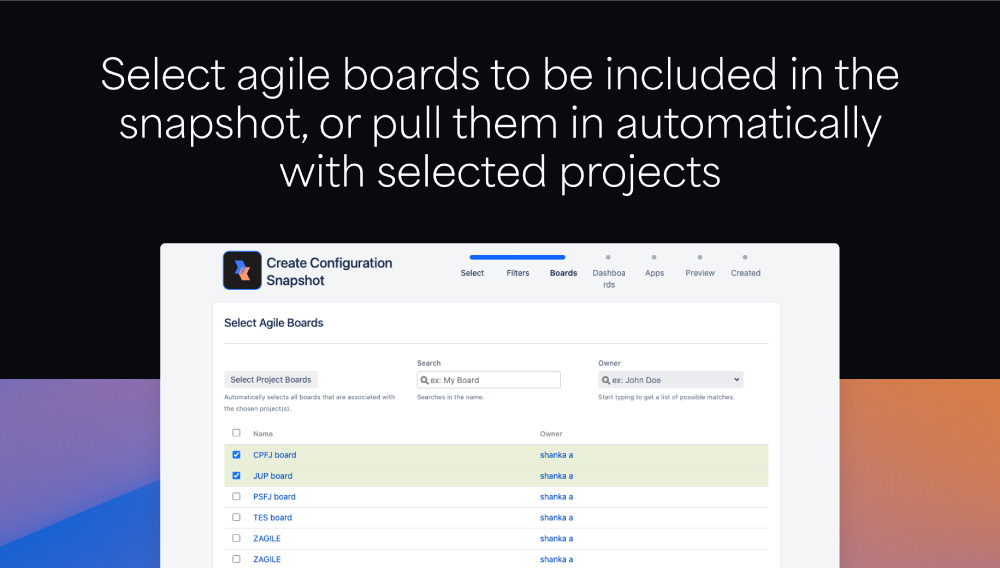

Three snapshot types with a multitude of options
When creating a snapshot, choose from three types: system configuration, project configuration, or project configuration with issues. Then proceed through the snapshot creation process to include filters, boards, dashboards, app data, attachments, and more as needed. Configurations, like filters, can be brought in based on project association, or manually selected, giving administrators total control over the snapshot.
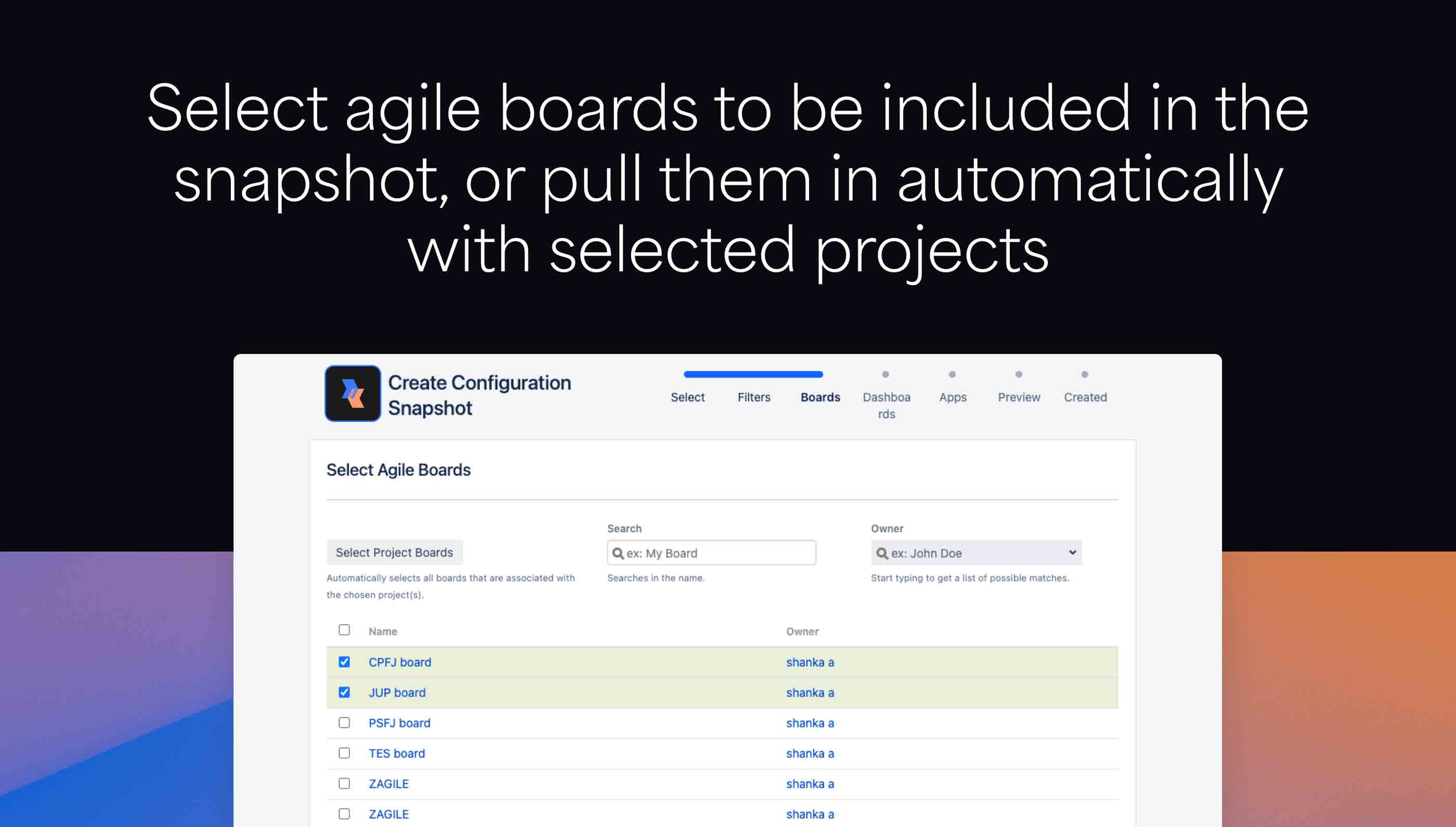

Pre-deployment change analysis
Search for configuration elements across your system at any time, or deploy a snapshot to a target and see detailed change & impact analysis. Make edits from the same screen.
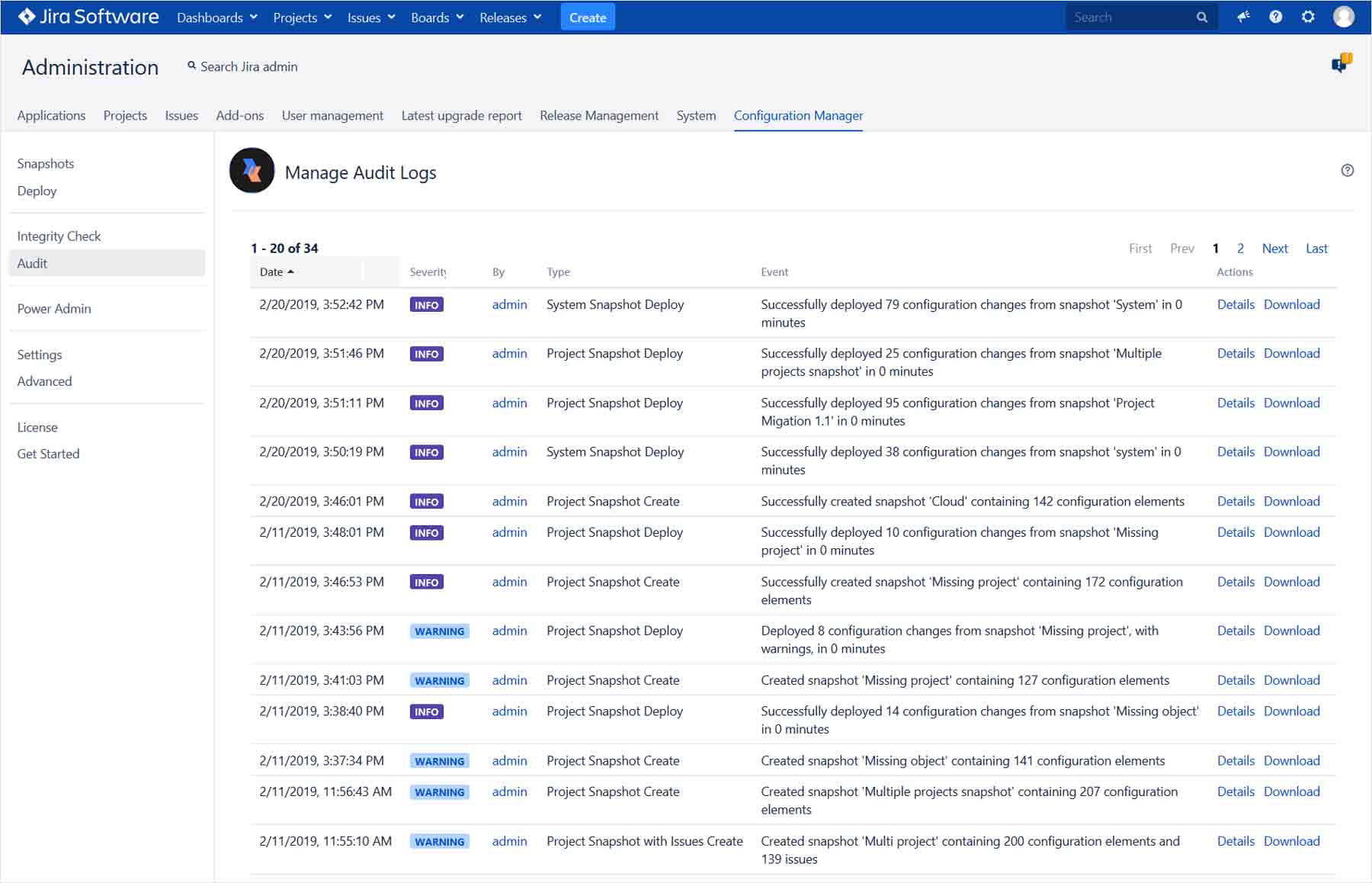

Pre-deployment warnings and suggested resolutions
Designed to help admins prevent unintended changes. CMJ lets you know if it sees a problem — and helps you fix it. Failed deployments automatically revert to the previous version.
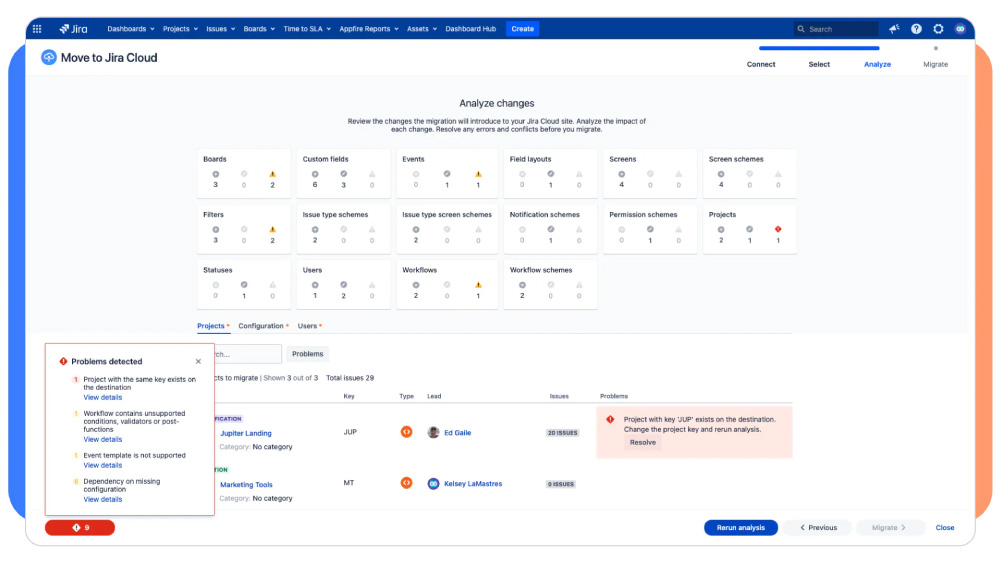

Audit logging and migration reports
When you deploy snapshots with CMJ, you can perform thousands of changes on the Jira configuration in just a few steps. To give you greater visibility over how your Jira configuration was changed, the Audit log component records each snapshot operation and provides details about the configuration changes.
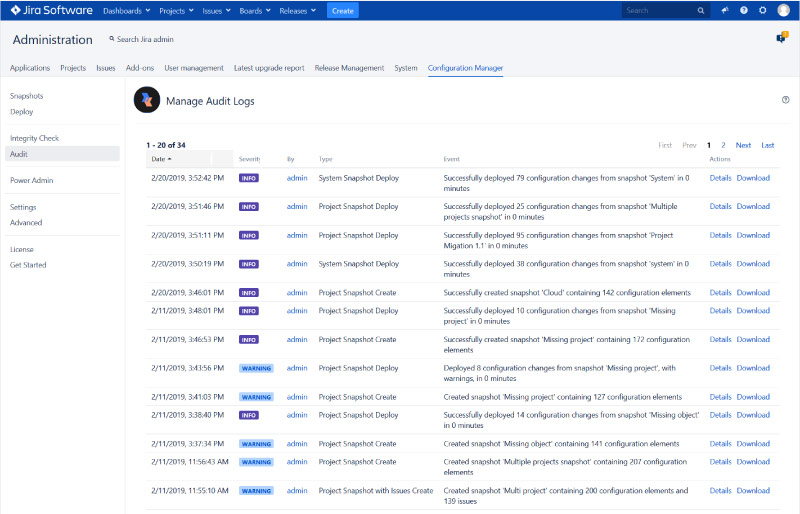

Option to manually include attachments, app data, and configurations
The snapshot creation wizard allows you to automatically pull in project and configuration elements or to manually include or exclude them.
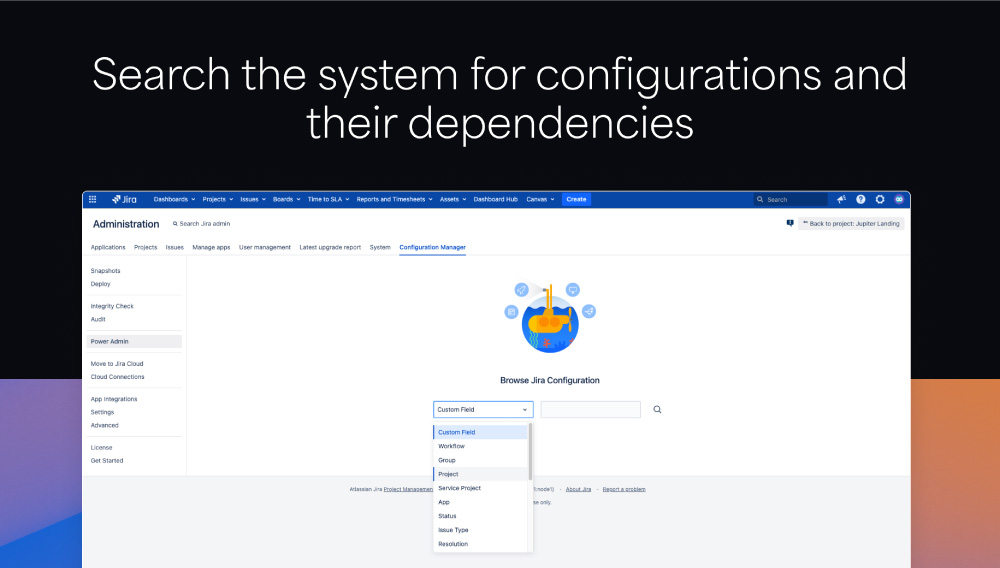

Benefits of using Configuration Manager for Jira (CMJ)
- No-fear migration - Automate moves of entire Jira instances or selected projects between server, Data Center, and Cloud. Safely consolidate or migrate with full transparency.
- Trustworthy automation - Robust change and impact analysis, roll-back protection, and audit logs allow transparency and enforce data integrity when making changes.
- Top-notch governance - Create snapshots of project configurations and move them freely between test, staging, and production environments. Modify or validate changes before introducing them in production.